Current Insights Regarding Metal-on-Metal Bearings for Hip Arthroplasty †
Abstract
:Acknowledgments
Conflicts of Interest
References
- McKee, G.K.; Watson-Farrar, J. Replacement of arthritic hips by the McKee-Farrar prosthesis. J. Bone Jt. Surg. Br. 1966, 48, 245–259. [Google Scholar]
- Ring, P.A. Ring UPM total hip arthroplasty. Clin. Orthop. Relat. Res. 1983, 176, 115–123. [Google Scholar] [CrossRef]
- Papps, A.M.; Cohen, J. Toxicity of Metal Particles in Tissue Culture: Part I: A New Assay Method Using Cell Counts in The Phase of Replication. J. Bone Jt. Surg. Am. 1968, 50, 535–547. [Google Scholar] [CrossRef]
- Rae, T. Comparative laboratory studies on the production of soluble and particulate metal by total joint prostheses. Arch Orthop. Trauma. Surg. 1979, 95, 71–79. [Google Scholar] [CrossRef] [PubMed]
- Charnley, J. Total hip replacement by low-friction arthroplasty. Clin. Orthop. Relat. Res. 1970, 72, 7–21. [Google Scholar] [CrossRef] [PubMed]
- Jasty, M.J.; Floyd, W.E., 3rd; Schiller, A.L.; Goldring, S.R.; Harris, W.H. Localized osteolysis in stable, non-septic total hip replacement. J. Bone Jt. Surg. Am. 1986, 68, 912–919. [Google Scholar] [CrossRef]
- Weber, B.G.; Fiechter, T. Polyethylene wear and late loosening of a total prosthesis of the hip joint? New perspectives for metal/metal pairing if the capsule and head. Orthopade 1989, 18, 370–376. [Google Scholar] [PubMed]
- Anissian, H.L.; Stark, A.; Gustafson, A.; Good, V.; Clarke, I.C. Metal-on-metal bearing in hip prosthesis generates 100-fold less wear debris than metal-on-polyethylene. Acta Orthop. Scand. 1999, 70, 578–582. [Google Scholar] [CrossRef] [PubMed]
- Sieber, H.P.; Rieker, C.B.; Köttig, P. Analysis of 118 second-generation metal-on-metal retrieved hip implants. J. Bone Jt. Surg. Br. 1999, 81, 46–50. [Google Scholar] [CrossRef]
- Hedlundh, U.; Ahnfelt, L.; Hybbinette, C.H.; Wallinder, L.; Weckström, J.; Fredin, H. Dislocations and the femoral head size in primary total hip arthroplasty. Clin. Orthop. Relat. Res. 1996, 333, 226–233. [Google Scholar] [CrossRef]
- Shimmin, A.J.; Bare, J.; Back, D.L. Complications associated with hip resurfacing arthroplasty. Orthop. Clin. N. Am. 2005, 36, 187–193. [Google Scholar] [CrossRef] [PubMed]
- Girard, J. Femoral head diameter considerations for primary total hip arthroplasty. Orthop. Trauma. Surg. Res. 2015, 101, S25–S29. [Google Scholar] [CrossRef] [PubMed]
- Malviya, A.; Ramaskandhar, J.R.; Bowman, R.; Kometa, S.; Hashmi, M.; Lingard, E.; Holland, J.P. What advantage is there to be gained using large modular metal-on-metal bearings in routine primary total hip replacement? Bone Jt. J. Dec. 2011, 93, 1602–1609. [Google Scholar] [CrossRef] [PubMed]
- Willert, H.G.; Buchhorn, G.H.; Fayyazi, A.; Flury, R.; Windler, M.; Köster, G.; Lohmann, C.H. Metal-on-metal bearings and hypersensitivity in patients with artificial hip joints. A clinical and histomorphological study. J. Bone Jt. Surg. Am. 2005, 87, 28–36. [Google Scholar]
- Pandit, H.; Glyn-Jones, S.; McLardy-Smith, P.; Gundle, R.; Whitwell, D.; Gibbons, C.L.; Ostlere, S.; Athanasou, N.; Gill, H.S.; Murray, D.W. Pseudotumours associated with Metal-on-Metal Hip Resurfacing. J. Bone Jt. Surg. Br. 2008, 90, 847–851. [Google Scholar] [CrossRef] [PubMed]
- De Smet, K.A.; Van Der Straeten, C.; Van Orsouw, M.; Doubi, R.; Backers, K.; Grammatopoulos, G. Revisions of metal-on-metal hip resurfacing: Lessons learned and improved outcome. Orthop. Clin. N. Am. 2011, 42, 259–269. [Google Scholar] [CrossRef] [PubMed]
- Australian Orthopaedic Association National Joint Replacement Registry. Annual Report 2010. Published October 2010. Available online: www.dmac.adelaide.edu.au/aoanjrr/publications.jsp (accessed on 4 August 2017).
- De Haan, R.; Pattyn, C.; Gill, H.S.; Murray, D.W.; Campbell, P.A.; De Smet, K. Correlation between inclination of the acetabular component and metal ion levels in metal-on-metal hip resurfacing replacement. J. Bone Jt. Surg. Br. 2008, 90, 1291–1297. [Google Scholar] [CrossRef] [PubMed]
- Van Der Straeten, C.; Grammatopoulos, G.; Gill, H.S.; Calistri, A.; Campbell, P.; De Smet, K.A. The 2012 Otto Aufranc Award: The interpretation of metal ion levels in unilateral and bilateral hip resurfacing. Clin. Orthop. Relat. Res. 2013, 471, 377–385. [Google Scholar] [CrossRef] [PubMed]
- Brockett, C.L.; Harper, P.; Williams, S.; Isaac, G.H.; Dwyer-Joyce, R.S.; Jin, Z.; Fisher, J. The influence of clearance on friction, lubrication and squeaking in large diameter metal-on-metal hip replacements. J. Mater. Sci. Mater. Med. 2008, 19, 1575–1579. [Google Scholar] [CrossRef] [PubMed]
- Langton, D.J.; Jameson, S.S.; Joyce, T.J.; Gandhi, J.N.; Sidaginamale, R.; Mereddy, P.; Lord, J.; Nargol, A.V. Accelerating failure rate of the ASR total hip replacement. J. Bone Jt. Surg. Br. 2011, 93, 1011–1016. [Google Scholar] [CrossRef] [PubMed]
- Clarke, I.C.; Donaldson, T.K.; Burgett, M.D.; Smith, E.J.; Bowsher, J.; Savisaar, C.; John, A.; Lazennec, J.Y.; McPherson, E.; Peters, C.L. Normal and adverse wear patterns created in vivo on metal-on-metal surfaces—A retrieval study representing four vendors. Metal-on-Metal Total Hip Replacement Devices STP 1560. 2013. Available online: www.astm.org (accessed on 4 August 2017).
- De Smet, K.; Campbell, P.; Van Der Straeten, C. The Hip Resurfacing Handbook. A Practical Guide to the Use and Management of Modern Hip Resurfacings. Introduction; Woodhead Publishing Limited: Oxford, UK; Cambridge, UK; Philadelphia, PA, USA; New Delhi, India, 2013. [Google Scholar]
- Van Der Straeten, C.; De Smet, K.A. Current expert views on metal-on-metal hip resurfacing arthroplasty. Consensus of the 6th Advanced hip resurfacing course, Ghent, Belgium, May 2014. Hip Int. 2016, 26, 1–7. [Google Scholar] [CrossRef] [PubMed]
- Australian Orthopaedic Association National Joint Replacement Registry. Annual Report 2016. Published October 2016. Available online: www.dmac.adelaide.edu.au/aoanjrr/publications.jsp (accessed on 4 August 2017).
- Shimmin, A.B.; Baré, J.V. Comparison of Functional Results of Hip Resurfacing and Total Hip Replacement: A Review of the Literature. Orthop. Clin. N. Am. 2011, 42, 143–151. [Google Scholar] [CrossRef] [PubMed]
- Seppänen, M.; Mäkelä, K.; Virolainen, P.; Remes, V.; Pulkkinen, P.; Eskelinen, A. Hip resurfacing arthroplasty: Short-term survivorship of 4401 hips from the Finnish Arthroplasty Register. Acta Orthop. 2012, 83, 207–213. [Google Scholar] [CrossRef] [PubMed]
- Hallab, N.; Merritt, K.; Jacobs, J.J. Metal sensitivity in patients with orthopaedic implants. J. Bone Jt. Surg. Am. 2001, 83, 428–436. [Google Scholar] [CrossRef]
- Kretzer, J.P.; Reinders, J.; Sonntag, R.; Hagmann, S.; Streit, M.; Jeager, S.; Moradi, B. Wear in total knee arthroplasty—Just a question of polyethylene?: Metal ion release in total knee arthroplasty. Int. Orthop. 2014, 38, 335–340. [Google Scholar] [CrossRef] [PubMed]
- Yan, Y.; Neville, A.; Dowson, D. Understanding the role of corrosion in the degradation of metal-on-metal implants. Proc. Inst. Mech. Eng. Part H 2006, 220, 173–180. [Google Scholar] [CrossRef] [PubMed]
- Hanawa, T. Metal ion release from metal implants. Mater. Sci. Eng. C 2004, 24, 745–752. [Google Scholar] [CrossRef]
- Estey, M.P.; Van Der Straeten, C.; Tower, S.S.; Hart, A.J.; Moyer, T.P.; Diamandis, E.P. Cobalt and Chromium Measurement in Patients with Metal Hip Prostheses. Clin. Chem. 2013, 59, 6. [Google Scholar] [CrossRef] [PubMed]
- Sidaginamale, R.P.; Joyce, T.J.; Lord, J.K.; Jefferson, R.; Blain, P.G.; Nargol, A.V.; Langton, D.J. Blood metal ion testing is an effectivescreening tool to identify poorly performing metal-on-metal bearingsurfaces. Bone Jt. Res. 2013, 16, 84–95. [Google Scholar] [CrossRef] [PubMed]
- Van Der Straeten, C.; Van Quickenborne, D.; De Roest, B.; Calistri, A.; Victor, J.; De Smet, K. Metal ion levels from well-functioning Birmingham Hip Resurfacings decline significantly at ten years. Bone Jt. J. 2013, 95, 1332–1338. [Google Scholar] [CrossRef] [PubMed]
- Yan, Y.; Dowson, D.; Neville, A. In-situ electrochemical study of interaction of tribology and corrosion in artificial hip prosthesis simulators. J. Mech. Behav. Biomed. Mater. 2012, 18, 191–199. [Google Scholar] [CrossRef] [PubMed]
- Mathew, M.T.; Jacobs, J.J.; Wimmer, M.A. Wear-corrosion synergism in a CoCrMo hip bearing alloy is influenced by proteins. Clin. Orthop. Relat. Res. 2012, 470, 3109–3117. [Google Scholar] [CrossRef] [PubMed]
- Venditolli, P.-A.; Amzica, T.; Roy, A.; Lusignan, D.; Girard, J.; Lavigne, M. Metal ion release with large-diameter metal-on-metal hip arthroplasty. J. Arthroplast. 2011, 26, 282–288. [Google Scholar] [CrossRef] [PubMed]
- Garbuz, D.S.; Tanzer, M.; Greidanus, N.V.; Masri, B.A.; Duncan, C.P. The John Charnley Award: Metal-on-metal hip resurfacing versus large-diameter head metal-on-metal total hip arthroplasty: A randomized clinical trial. Clin. Orthop. Relat. Res. 2010, 468, 318–325. [Google Scholar] [CrossRef] [PubMed]
- Osman, K.; Panagiotidou, A.P.; Khan, M.; Blunn, G.; Haddad, F.S. Corrosion at the head-neck interface of current designs of modular femoral components: Essential questions and answers relating to corrosion in modular head-neck junctions. Bone Jt. J. 2016, 98, 579–584. [Google Scholar] [CrossRef] [PubMed]
- Panagiotidou, A.; Meswania, J.; Hua, J.; Muirhead-Allwood, S.; Hart, A.; Blunn, G. Enhanced wear and corrosion in modular tapers in total hip replacement is associated with contact area and surface topography. J. Orthop. Res. 2013, 31, 2032–2039. [Google Scholar] [CrossRef] [PubMed]
- Hothi, H.S.; Eskelinen, A.P.; Berber, R.; Lainiala, O.S.; Moilanen, T.P.S.; Skinner, J.A.; Hart, A.J. Factors associated with Trunnionosis in the Metal-on-Metal Pinnacle Hip. J. Arthroplast. 2017, 32, 286–290. [Google Scholar] [CrossRef] [PubMed]
- Cooper, H.J.; Della Valle, C.J.; Berger, R.A.; Tetreault, M.; Paprosky, W.G.; Sporer, S.M.; Jacobs, J.J. Corrosion at the head–neck taper as a cause for adverse local tissue reactions after total hip arthroplasty. J. Bone Jt. Surg. Am. 2012, 94, 1655–1661. [Google Scholar] [CrossRef]
- Cook, R.B.; Bolland, B.J.; Wharton, J.A.; Tilley, S.; Latham, J.M.; Wood, R.J. Pseudotumour formation due to tribocorrosion at the taper interface of large diameter metal on polymer modular total hip replacements. J. Arthroplast. 2013, 28, 1430–1436. [Google Scholar] [CrossRef] [PubMed]
- Hallab, N.J.; Jacobs, J.J. Biologic effects of implant debris. Bull. NYU Hosp. Jt. Dis. 2009, 67, 182–188. [Google Scholar] [PubMed]
- Leavelle, D.E. Interpretive Handbook: Interpretive Data for Diagnostic Laboratory Tests; Mayo Medical Laboratories: Rochester, MN, USA, 2001. [Google Scholar]
- Leyssens, L.; Vinck, B.; Van Der Straeten, C.; Wuyts, F.; Maes, L. Cobalt toxicity in humans—A review of the potential sources and systemic health effects. Toxicology 2017, 387, 43–56. [Google Scholar] [CrossRef] [PubMed]
- Tower, S.S. Arthroprosthetic cobaltism: Neurological and cardiac manifestations in two patients with metal-on-metal arthroplasty: A case report. J. Bone Jt. Surg. Am. 2010, 92, 2847–2851. [Google Scholar] [CrossRef] [PubMed]
- Tower, S. Arthroprosthetic cobaltism: Identification of the at-risk patient. Alaska Med. 2010, 52, 28–32. [Google Scholar] [PubMed]
- Rizzetti, M.C.; Liberini, P.; Zarattini, G.; Catalani, S.; Pazzaglia, U.; Apostoli, P.; Padovani, A. Loss of sight and sound. Could it be the hip? Lancet 2009, 373, 1052. [Google Scholar] [CrossRef]
- Van Lingen, C.P.; Ettema, H.B.; Van Der Straeten, C.; Kollen, B.J.; Verheyen, C.C. Self-reported neurological clinical manifestations of metal toxicity in metal-on-metal hip arthroplasty. Hip Int. 2014, 24, 568–574. [Google Scholar] [CrossRef] [PubMed]
- Ikeda, T.; Takahashi, K.; Kabata, T.; Sakagoshi, D.; Tomita, K.; Yamada, M. Polyneuropathy caused by cobalt-chromium metallosis after total hip replacement. Muscle Nerve 2010, 42, 140–143. [Google Scholar] [CrossRef] [PubMed]
- Corradi, M.; Daniel, J.; Ziaee, H.; Alinovi, R.; Mutti, A.; McMinn, D. Early Markers of Nephrotoxicity in Patients With Metal-on-metal Hip Arthroplasty. Clin. Orthop. Relat. Res. 2011, 469, 1651–1659. [Google Scholar] [CrossRef] [PubMed]
- Kwon, Y.M.; Xia, Z.; Glyn-Jones, S.; Beard, D.; Gill, H.S.; Murray, D.W. Dose-dependent cytotoxicity of clinically relevant cobalt nanoparticles and ions on macrophages in vitro. Biomed. Mater. 2009, 4, 025018. [Google Scholar] [CrossRef] [PubMed]
- Nine, M.J.; Choudhury, D.; Hee, A.C.; Mootanah, R.; Osman, N.A.A. Wear Debris Characterization and Corresponding Biological Response: Artificial Hip and Knee Joints. Materials 2014, 7, 980–1016. [Google Scholar] [CrossRef] [PubMed]
- Sansone, V.; Pagani, D.; Melato, M. The effects on bone cells of metal ions released from orthopaedic implants. A review. Clin. Cases Miner. Bone Metab. 2013, 10, 34–40. [Google Scholar] [CrossRef] [PubMed]
- Baskey, S.J.; Lehoux, E.A.; Catelas, I. Effects of cobalt and chromium ions on lymphocyte migration. J. Orthop. Res. 2017, 35, 916–924. [Google Scholar] [CrossRef] [PubMed]
- Campbell, P.; Ebramzadeh, E.; Nelson, S.; Takamura, K.; De Smet, K.; Amstutz, H.C. Histological features of pseudotumor-like tissues from metal-on-metal hips. Clin. Orthop. Relat. Res. 2010, 468, 2321–2327. [Google Scholar] [CrossRef] [PubMed]
- Smeekes, C.; Cleven, A.H.G.; van der Wal, B.C.H.; Dubois, S.V.; Rouse, R.W.; Ongkiehong, B.F.; Wolterbeek, R.; Nelissen, R.G.H.H. Current Pathologic Scoring Systems for Metal-on-metal THA Revisions are not Reproducible. Clin. Orthop. Relat. Res. 2017. [Google Scholar] [CrossRef] [PubMed]
- Frigerio, E.; Pigatto, P.D.; Guzzi, G.; Altomare, G. Metal sensitivity in patients with orthopaedic implants: A prospective study. Contact Dermat. 2011, 64, 273–279. [Google Scholar] [CrossRef] [PubMed]
- Münch, H.J.; Jacobsen, S.S.; Olesen, J.T.; Menné, T.; Søballe, K.; Johansen, J.D.; Thyssen, J.P. The association between metal allergy, total knee arthroplasty, and revision: Study based on the Danish Knee Arthroplasty Register. Acta Orthop. 2015, 86, 378–383. [Google Scholar] [CrossRef] [PubMed]
- Ladon, D.; Doherty, A.; Newson, R.; Turner, J.; Bhamra, M.; Case, C.P. Changes in metal levels and chromosome aberrations in the peripheral blood of patients after metal-on-metal hip arthroplasty. J. Arthroplast. 2004, 19 (Suppl. 3), 78–83. [Google Scholar] [CrossRef]
- Ziaee, H.; Daniel, J.; Datta, A.K.; Blunt, S.; McMinn, D.J. Transplacental transfer of cobalt and chromium in patients with metal-on-metal hip arthroplasty: A controlled study. J. Bone Jt. Surg. Br. 2007, 89, 301–305. [Google Scholar] [CrossRef] [PubMed]
- Nikolaou, V.; Petit, A.; Huk, O.; Zukor, D.; Bergeron, S.; Antoniou, J. Semen metal ion levels and sperm quality in patients with metal on metal total hip replacement. J. Bone Jt. Surg. Br. 2011, 93, 130. [Google Scholar]
- Jelnes, J.E.; Knudsen, L.E. Stainless steel welding and semen quality. Reprod. Toxicol. 1988, 2, 213–215. [Google Scholar] [CrossRef]
- Mäkelä, K.T.; Visuri, T.; Pulkkinen, P.; Eskelinen, A.; Remes, V.; Virolainen, P.; Junnila, M.; Pukkala, E. Cancer incidence and cause-specific mortality in patients with metal-on-metal hip replacements in Finland. Acta Orthop. 2014, 85, 32–38. [Google Scholar] [CrossRef] [PubMed]
- Smith, A.J.; Dieppe, P.; Porter, M.; Blom, A.W. National Joint Registry of England and Wales. Risk of cancer in first seven years after metal-on-metal hip replacement compared with other bearings and general population: Linkage study between the National Joint Registry of England and Wales and hospital episode statistics. BMJ 2012, 344, e2383. [Google Scholar] [PubMed]
- Daniel, J.; Pradhan, C.; Ziaee, H.; Pynsent, P.B.; McMinn, D.J. Results of Birmingham hip resurfacing at 12 to 15 years: A single-surgeon series. Bone Jt. J. 2014, 96-B, 1298–1306. [Google Scholar] [CrossRef] [PubMed]
- Amstutz, H.C.; Le Duff, M.J. Hip resurfacing: History, current status, and future. Hip Int. 2015, 25, 330–338. [Google Scholar] [CrossRef] [PubMed]
- Gaillard, M.D.; Gross, T.P. Metal-on-metal hip resurfacing in patients younger than 50 years: A retrospective analysis: 1285 cases, 12-year survivorship. J. Orthop. Surg. Res. 2017, 12, 79. [Google Scholar] [CrossRef] [PubMed]
- Aqil, A.; Drabu, R.; Bergmann, J.H.; Masjedi, M.; Manning, V.; Andrews, B.; Muirhead-Allwood, S.; Cobb, J. The gait of patients with one resurfacing and one replacement hip: A single blinded controlled study. Int. Orthop. 2013, 37, 795–801. [Google Scholar] [CrossRef] [PubMed]
- Vendittoli, P.A.; Rivière, C.; Roy, A.G.; Barry, J.; Lusignan, D.; Lavigne, M. Metal-on-metal hip resurfacing compared with 28-mm diameter metal-on-metal total hip replacement: A randomised study with six to nine years’ follow-up. Bone Jt. J. 2013, 95-B, 1464–1473. [Google Scholar] [CrossRef] [PubMed]
- McMinn, D.J.; Snell, K.I.; Daniel, J.; Treacy, R.B.; Pynsent, P.B.; Riley, R.D. Mortality and implant revision rates of hip arthroplasty in patients with osteoarthritis: Registry based cohort study. BMJ 2012, 344, e3319. [Google Scholar] [CrossRef] [PubMed]
- Kendal, A.R.; Arden, N.K.; Carr, A.; Judge, A. Mortality rates at 10 years after metal-on-metal hip resurfacing compared with total hip replacement in England: Retrospective cohort analysis of hospital episode statistics. BMJ 2013, 347, f6549. [Google Scholar] [CrossRef] [PubMed]
- Delaunay, C.P.; Putman, S.; Puliéro, B.; Bégin, M.; Migaud, H.; Bonnomet, F. Cementless Total Hip Arthroplasty With Metasul Bearings Provides Good Results in Active Young Patients: A Concise Followup. Clin. Orthop. Relat. Res. 2016, 474, 2126–2133. [Google Scholar] [CrossRef] [PubMed]
- Scientific Committee on Emerging and Newly Identified Health Risks of the European COmmission DG health and COnsumers. Opinion on the safety of Metal-on-Metal joint replacements with a particular focus on hip implants. In Proceedings of the Opinion Adopted at 7th Plenary of SCENIHR, Luxembourg, 24–25 September 2014. [Google Scholar]
- Food and Drug Administration. FDA 522 Guidance Document. Available online: www.fda.gov/downloads/MedicalDevices/DeviceRegulationandGuidance/GuidanceDocuments/ucm072564.pdf (accessed on 16 August 2011).
- MHRA Updated Advice Provided in MDA/2012/036, to Assist the Early Detection of Soft Tissue Reactions in Patients Implanted with Metal-on-Metal (MoM) Hip Replacements (MDA/2017/018). Available online: www.gov.uk since (accessed on 29 June 2017).
- Smith&Nephew Statement Regarding BHR System 4th June 2015. Available online: Smith-Nephew.com (accessed on 4 June 2015).
- Hussey, D.K.; McGrory, B.J. Ten-Year Cross-Sectional Study of Mechanically Assisted Crevice Corrosion in 1352 Consecutive Patients With Metal-on-Polyethylene Total Hip Arthroplasty. J. Arthroplast. 2017, 32, 2546–2551. [Google Scholar] [CrossRef] [PubMed]
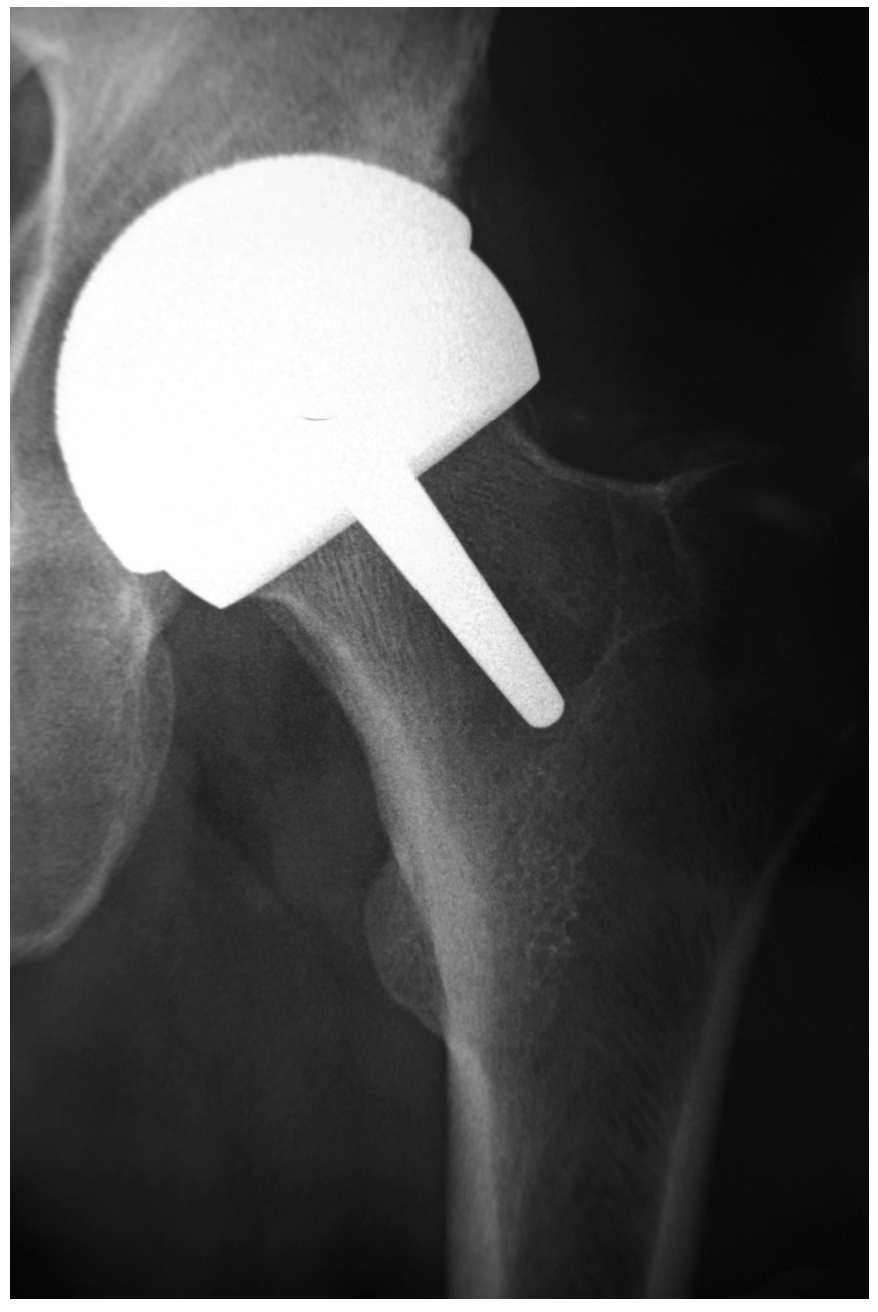


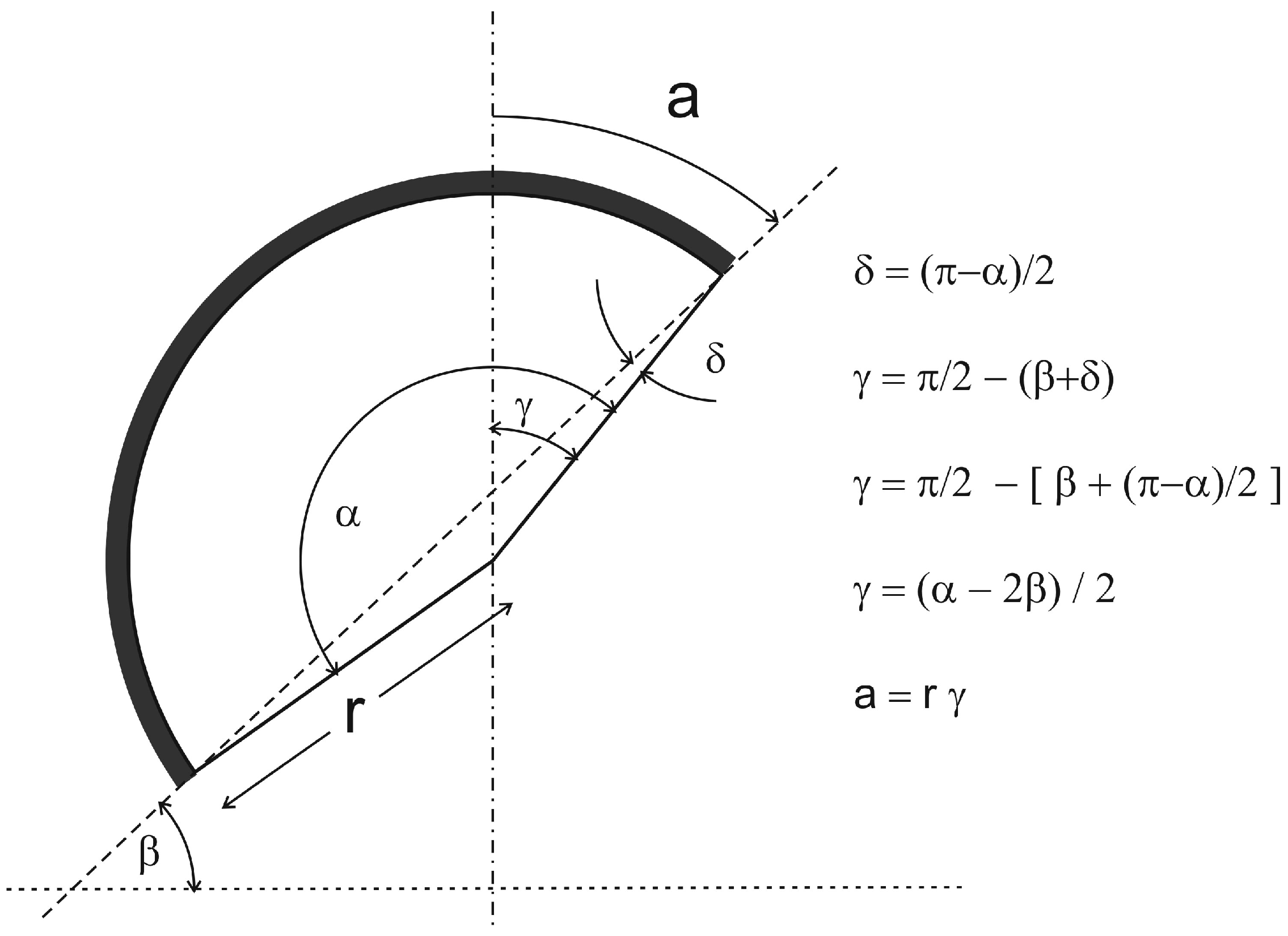
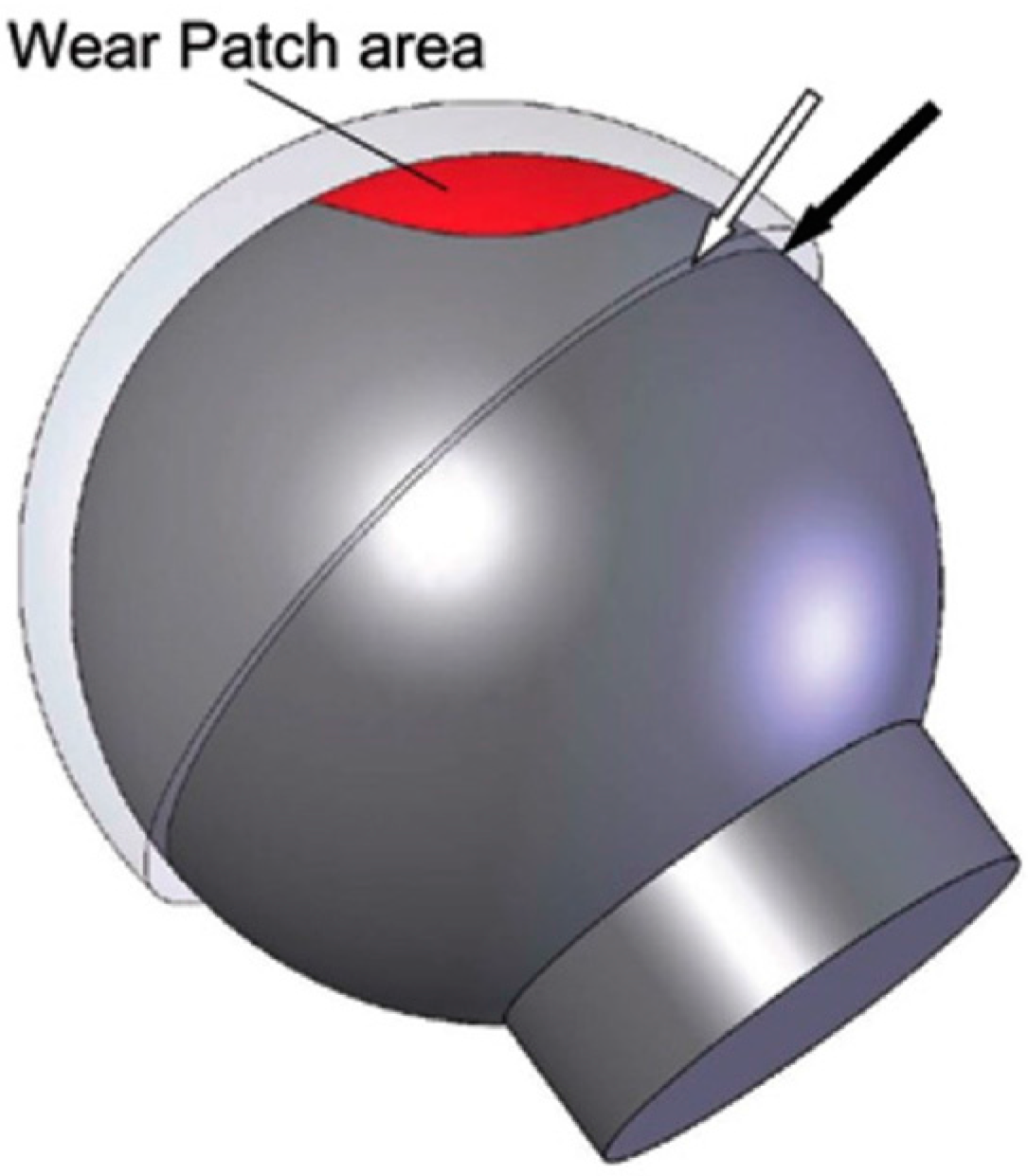

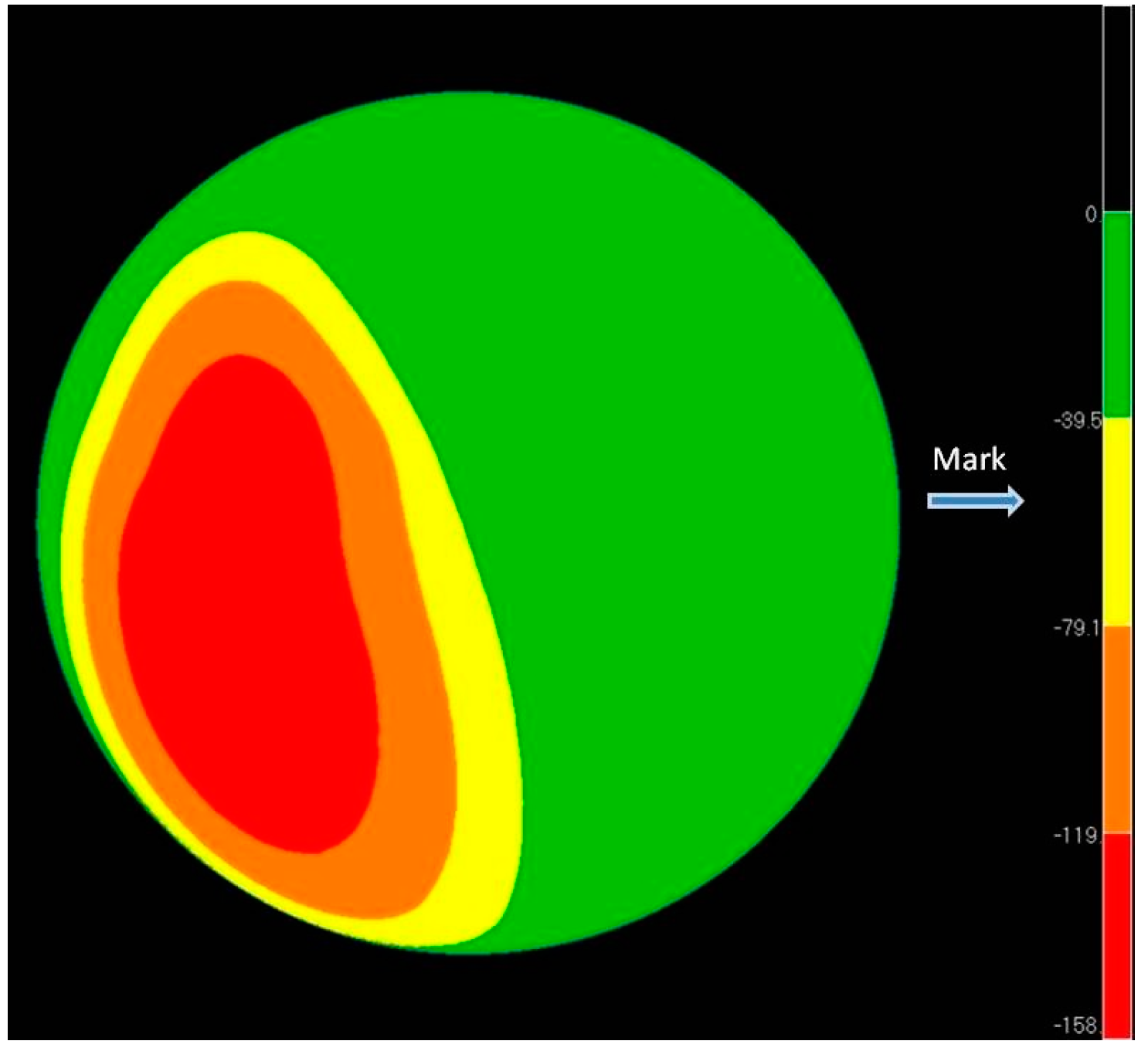
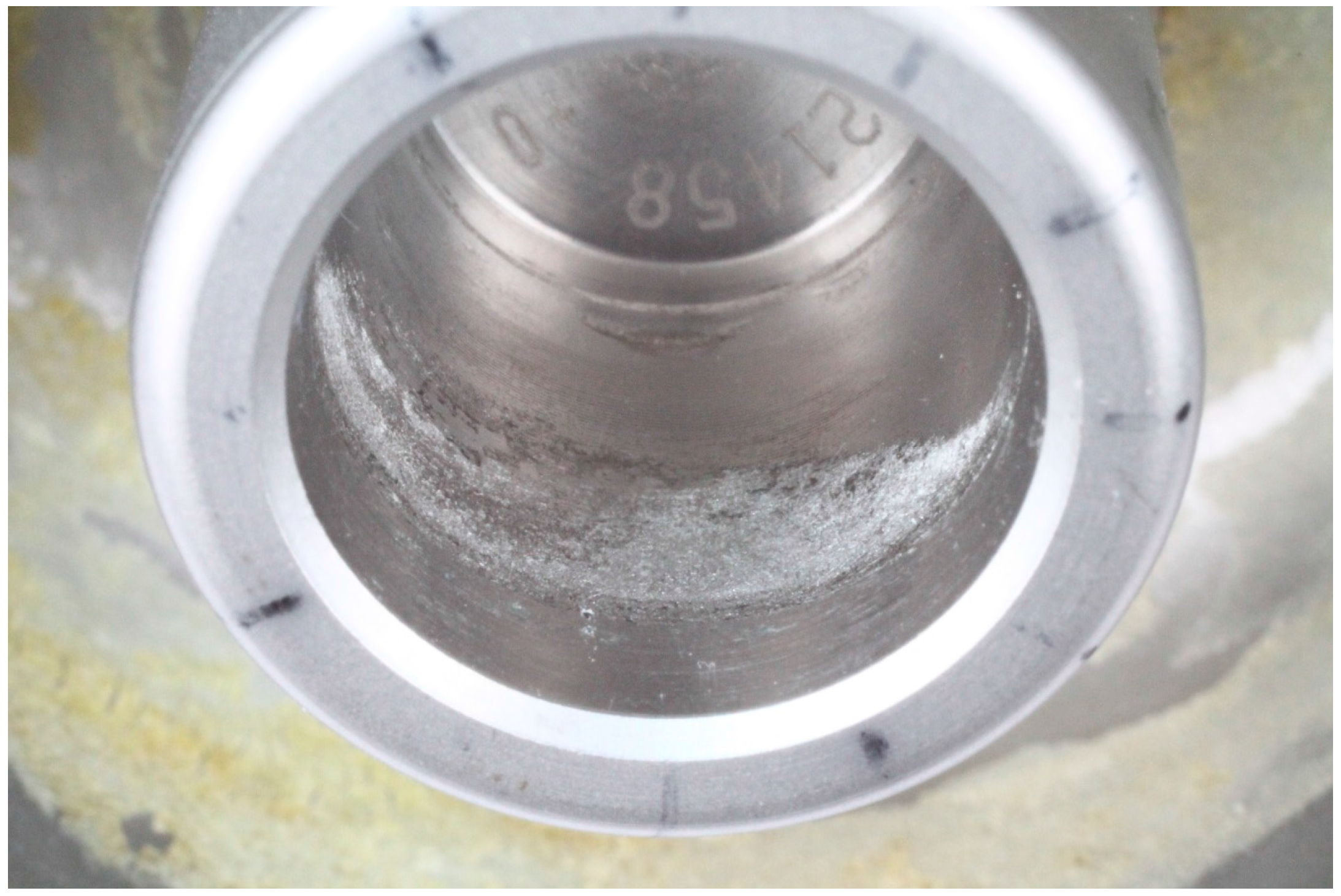
© 2017 by the author. Licensee MDPI, Basel, Switzerland. This article is an open access article distributed under the terms and conditions of the Creative Commons Attribution (CC BY) license (http://creativecommons.org/licenses/by/4.0/).
Share and Cite
Van Der Straeten, C. Current Insights Regarding Metal-on-Metal Bearings for Hip Arthroplasty. Lubricants 2017, 5, 37. https://doi.org/10.3390/lubricants5030037
Van Der Straeten C. Current Insights Regarding Metal-on-Metal Bearings for Hip Arthroplasty. Lubricants. 2017; 5(3):37. https://doi.org/10.3390/lubricants5030037
Chicago/Turabian StyleVan Der Straeten, Catherine. 2017. "Current Insights Regarding Metal-on-Metal Bearings for Hip Arthroplasty" Lubricants 5, no. 3: 37. https://doi.org/10.3390/lubricants5030037




